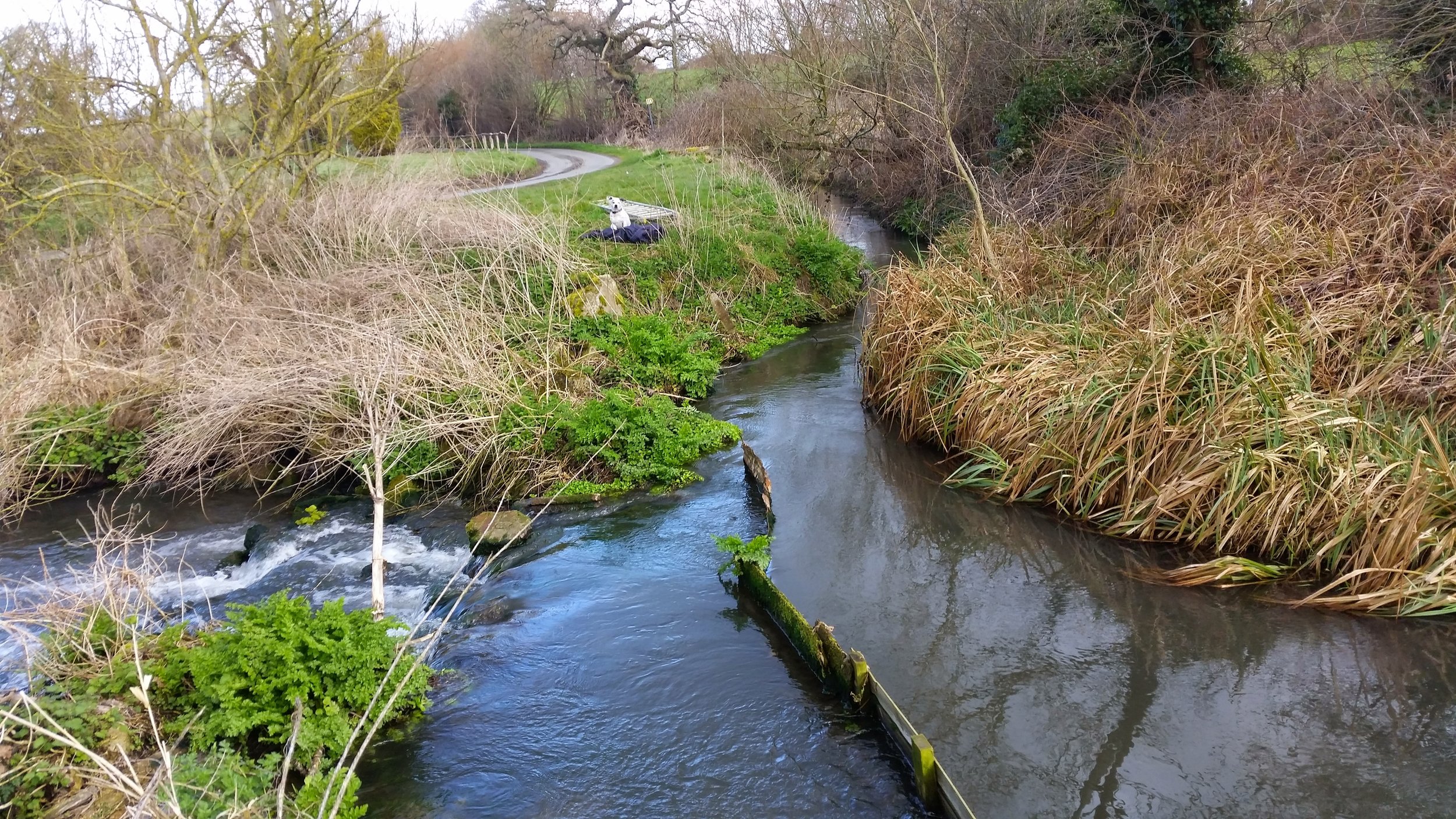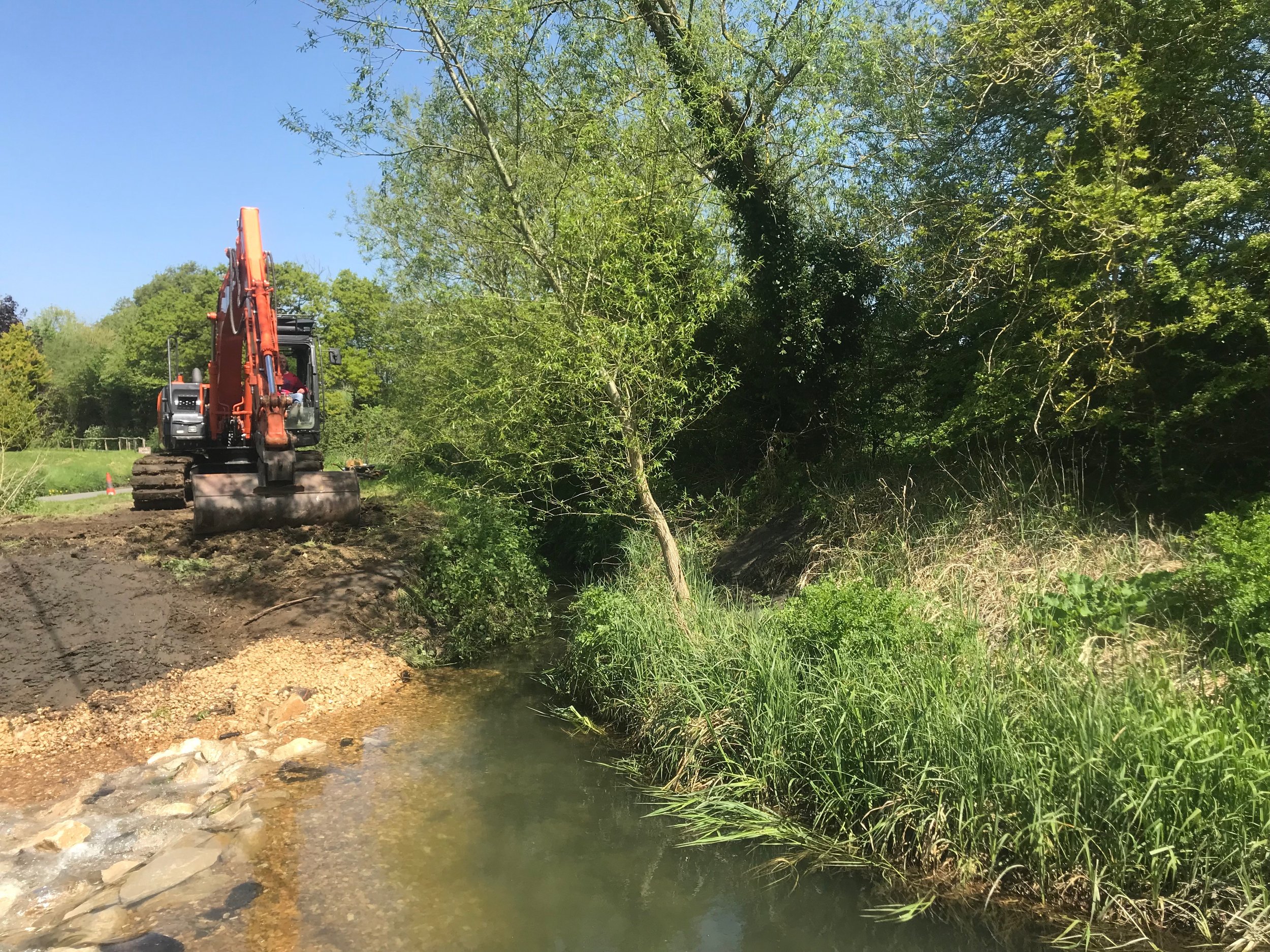Semington Brook Fish Passage Easement
The boulder weir prior to the works was impassable for many fish species.
An excavator was used to introduce limestone boulders and gravel to form the new nature like rock ramp fish passage easement.
Following a lengthy period of consultation, surveying and planning, Ecolibrium were granted consent to modify an existing boulder weir on the Semington Brook in order to improve habitat connectivity for a multitude of fish species.
The weir was originally installed in the 1980’s to provide flow to a commercial trout fishery. The relatively small weir would have been passable for fish when it was originally installed but increasingly low annual flows, exacerbated by groundwater abstraction in the catchment, increased the head drop over the weir; sometimes presenting as a complete barrier for fish passage.
When the surface water abstraction license for the lakes came up for renewal, Ecolibrium was appointed by the business owner to design and install an affordable and passable replacement that would secure the flow requirements of the business and also maximise fish passage for multiple species.
Ecolibrium worked closely with the Wild Trout Trust to design and build a nature like rock ramp fish passage easement. This would closely mimic naturally passable rocky cascade features, spreading the head drop over a significantly greater distance, baffling flows and incorporating refuge and cover habitat within the feature.
What did we do?
1) Consulted with various Environment Agency departments in order to gain the relevant permits to undertake the works.
2) Conducted full topographical surveys of the site including long section and cross section measurements.
3) Calculated what percentage flow split the fishery was receiving, and whether this matched the terms on their previous license.
4) Produced detailed existing and proposed drawings of the weir and the up and downstream reaches.
5) Imported approximately 40 tonnes of locally sourced Limestone and gravel for the fish passage easement.
What were the outcomes?
1) The old, dilapidated impoundment was replaced with a nature-like rock ramp constructed to a specific design and gradient to be passable for multiple species including brown trout and European eel.
2) The existing weir crest height was maintained as to not compromise the existing flow conditions into the Trout Lakes.
3) The build aspect of the project was delivered quickly and efficiently, ahead of schedule.
4) The new weir passed inspection by the Environment Agency.
The new fish passage easement close to completion. Limestone boulders were positioned to create baffling flows and habitat refuge for a variety of fish species.
An operative checks the levels to ensure that the gradient is gentle enough for fish to be able to migrate up and downstream.




